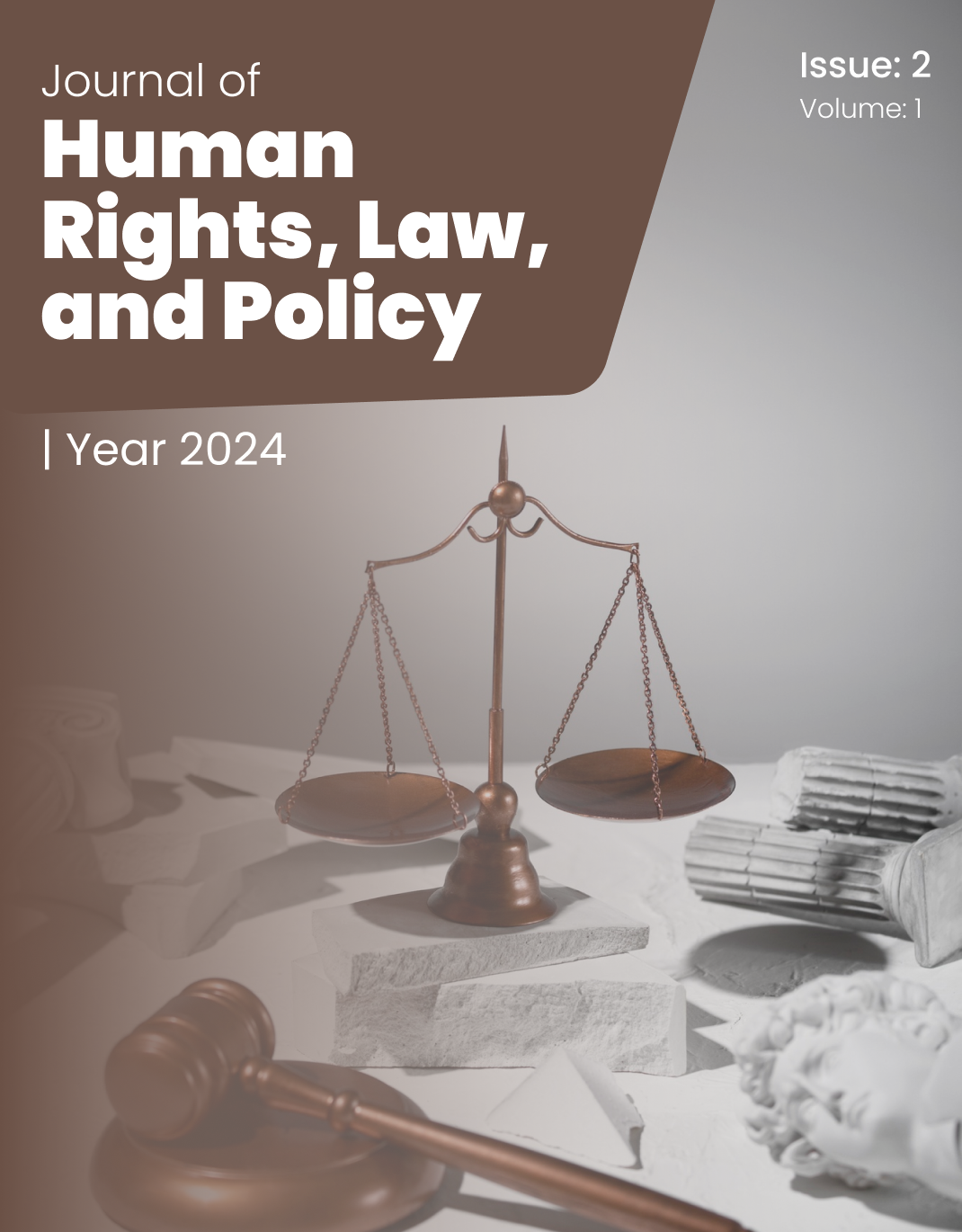Implementing International Human Rights Treaties at the Local Level: A Qualitative Study
Keywords:
Human rights implementation, international treaties, local governance, qualitative research, legal empowerment, political constraints, Tehran, localization of rightsAbstract
This study aims to explore the challenges and enabling factors associated with the implementation of international human rights treaties at the local level in Tehran. This qualitative study employed semi-structured interviews with 19 participants, including municipal officials, legal professionals, civil society actors, and academic experts involved in human rights governance in Tehran. Participants were selected through purposive sampling, and interviews continued until theoretical saturation was achieved. Data were analyzed thematically using NVivo software, following Braun and Clarke’s six-phase model of thematic analysis. Thematic analysis revealed four main categories influencing treaty implementation: (1) legal and institutional frameworks, (2) capacity and knowledge gaps, (3) political and cultural constraints, and (4) strategies and enablers of implementation. Key barriers included the absence of enabling legislation, institutional fragmentation, judicial resistance, limited awareness among local actors, politicization of rights discourse, and cultural conflicts with international norms. Despite these challenges, the study identified promising strategies such as the role of human rights champions, use of soft law instruments, cross-sectoral partnerships, legal empowerment initiatives, community-based approaches, and digital advocacy tools. These enablers highlighted the importance of contextual adaptation and bottom-up initiatives in operationalizing treaty commitments at the local level. The findings underscore that treaty ratification alone does not ensure local compliance. Legal ambiguities, institutional weaknesses, and sociopolitical dynamics significantly shape how international human rights norms are interpreted and implemented at the municipal level. However, context-sensitive strategies rooted in collaboration, empowerment, and cultural legitimacy offer viable pathways to enhance local-level human rights realization. Strengthening subnational capacities and fostering inclusive networks is essential for the effective localization of international human rights treaties.
Downloads
References
Afshari, R. (2001). Human Rights in Iran: The Abuse of Cultural Relativism. University of Pennsylvania Press.
An-Na'im, A. A. (2002). Human Rights in Cross-Cultural Perspectives: A Quest for Consensus. University of Pennsylvania Press.
Banakar, R. (2015). Normativity in Legal Sociology: Methodological Reflections on Law and Regulation in Late Modernity. Springer.
Benedek, W., Kettemann, M. C., & Möstl, M. (2020). Freedom of Expression and the Internet. Council of Europe Publishing.
De Feyter, K., Parmentier, S., Timmerman, C., & Ulrich, G. (Eds.). (2011). The Local Relevance of Human Rights. Cambridge University Press.
Engle Merry, S. (2006). Human Rights and Gender Violence: Translating International Law into Local Justice. University of Chicago Press.
Gauri, V., & Brinks, D. M. (Eds.). (2008). Courting Social Justice: Judicial Enforcement of Social and Economic Rights in the Developing World. Cambridge University Press.
Golub, S. (2003). Beyond Rule of Law Orthodoxy: The Legal Empowerment Alternative. Carnegie Endowment for International Peace Working Paper, 41.
Goodale, M., & Engle Merry, S. (Eds.). (2007). The Practice of Human Rights: Tracking Law Between the Global and the Local. Cambridge University Press.
Goodhart, M. (2016). Human Rights: Politics and Practice (3rd ed.). Oxford University Press.
Hathaway, O. A. (2002). Do Human Rights Treaties Make a Difference? The Yale Law Journal, 111(8), 1935–2042.
Hertel, S., & Libal, K. (2011). Human Rights in the United States: Beyond Exceptionalism. Cambridge University Press.
Jahanbani, S. (2016). The Status of International Human Rights Law in the Iranian Legal System. Iran Human Rights Review, 6(1), 45–59.
Keck, M. E., & Sikkink, K. (1998). Activists Beyond Borders: Advocacy Networks in International Politics. Cornell University Press.
Langford, M., Cousins, B., Dugard, J., & Madlingozi, T. (Eds.). (2017). Socio-Economic Rights in South Africa: Symbols or Substance? Cambridge University Press.
Levitt, P., & Merry, S. E. (2009). Vernacularization on the Ground: Local Uses of Global Women’s Rights in Peru, China, India and the United States. Global Networks, 9(4), 441–461.
Marks, S. P., & Modrowski, S. (2010). Human Rights and Development: Towards Mutual Reinforcement. International Journal of Human Rights, 14(1), 1–24.
Merry, S. E. (2006). Transnational Human Rights and Local Activism: Mapping the Middle. American Anthropologist, 108(1), 38–51.
Oomen, B., & Baumgärtel, M. (2014). Human Rights Cities. The European Journal of Human Rights, 3, 377–395.
Rodríguez-Garavito, C. (2011). Beyond the Courtroom: The Impact of Judicial Activism on Socioeconomic Rights in Latin America. Texas Law Review, 89(7), 1669–1698.
Sano, H.-O. (2000). Development and Human Rights: The Necessary, but Partial Integration of Human Rights and Development. Human Rights Quarterly, 22(3), 734–752.
Satterthwaite, M. L., & Hurwitz, A. (2005). The Promise and Peril of Human Rights Litigation in Domestic Courts. Harvard Human Rights Journal, 18, 65–101.
Downloads
Published
Submitted
Revised
Accepted
Issue
Section
License

This work is licensed under a Creative Commons Attribution-NonCommercial 4.0 International License.

